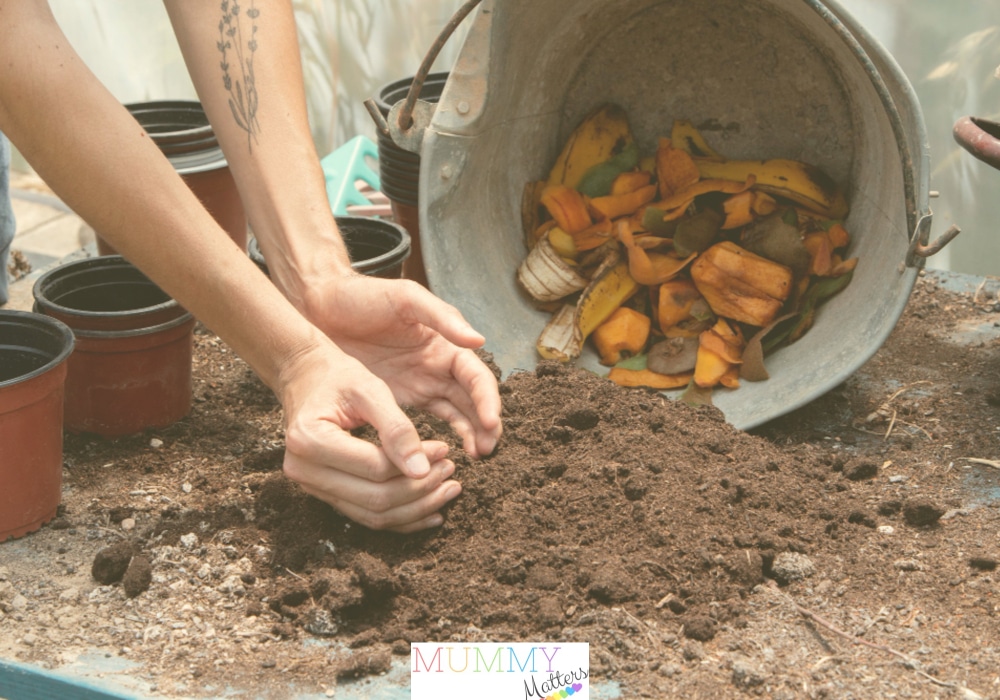Embracing Eco-friendly living for a better future
Table of Contents
Eco-friendly living is not just a trend; it’s a necessity for the survival of our planet and future generations. By adopting sustainable practices, we can reduce our carbon footprint, conserve natural resources, and minimize pollution. But why is eco-friendly living so important?
Why eco-friendly living is important
By choosing eco-friendly alternatives helps combat climate change. By reducing our reliance on fossil fuels and using renewable energy sources such as solar or wind power, we can decrease greenhouse gas emissions. This shift towards cleaner energy is crucial in mitigating the devastating effects of global warming.
Secondly, eco-friendly living promotes biodiversity and protects ecosystems. When we choose organic products and support local farmers who use sustainable agricultural methods, we contribute to preserving soil health and preventing the contamination of waterways with harmful pesticides or fertilizers. This approach allows wildlife habitats to thrive and ensures greater food security for both human beings and other species.
Energy conservation – tips for a greener home
One of the easiest and most effective eco-friendly living in your home is by conserving energy. By reducing your energy consumption, you not only contribute to a greener environment but also save on utility bills. Start by making small changes, like switching to LED light bulbs, which use up to 80% less energy than traditional incandescent bulbs. Additionally, always remember to turn off lights and unplug electronics when not in use, as even standby mode consumes electricity.
Another way to conserve energy is by properly insulating your home. This helps maintain comfortable indoor temperatures without relying heavily on heating or cooling systems. Simple actions such as sealing gaps around windows and doors with weatherstripping can have a significant impact on reducing heat loss in the winter and heat gain in the summer. Investing in aircon repair or ensuring your HVAC system is regularly maintained can also help to prevent your air conditioning unit from overworking, which can reduce energy consumption. A well-serviced aircon system operates much more efficiently and helps maintain optimal temperatures without straining your electricity usage. Investing in quality insulation materials for walls, floors, and attics can also make a noticeable difference in reducing power usage.
Consider upgrading old appliances with newer models that are more energy-efficient. Look for appliances with an Energy Star label, which indicates that they meet strict standards for efficiency set by the Environmental Protection Agency (EPA). For example, replacing an outdated refrigerator with an Energy Star-certified one can save a considerable amount of money over its lifetime while significantly reducing greenhouse gas emissions.
Sustainable transportation – choosing eco-friendly options
When it comes to eco-friendly living, sustainable transportation is a key factor to consider. While most people associate sustainability with renewable energy and recycling, the choices we make in how we travel also have a significant impact on the environment. One option for sustainable transportation is cycling or walking, which not only reduces carbon emissions but also promotes physical health and wellness. By choosing these modes of transportation whenever possible, individuals can contribute to both personal and environmental well-being.
Another eco-friendly option for transportation is carpooling or ridesharing. This not only lowers carbon emissions by reducing the number of vehicles on the road but also helps in alleviating traffic congestion. With the increasing popularity of ride-sharing apps and platforms, it has become easier than ever to connect with others traveling in the same direction as us. Carpooling can offer financial benefits through shared costs, but it also provides an opportunity to socialize and meet new people while being environmentally responsible.
Electric Vehicles
Electric vehicles (EVs) have emerged as a prominent solution in the pursuit of eco-friendly living. With zero tailpipe emissions, these vehicles play a crucial role in reducing air pollution and minimizing the carbon footprint. However, their environmental benefits extend beyond just cleaner air. The transition to electric vehicles also has the potential to transform our energy and transportation systems.
One often overlooked advantage is their ability to serve as mobile energy storage units. With advancements in battery technology, EV owners can not only charge their cars but also harness the stored energy from their vehicle batteries during periods of high demand or blackouts. This bidirectional flow of electricity between cars and power grids creates a decentralized energy ecosystem that promotes grid stability and optimized utilization of renewable resources.
As adoption rates for electric vehicles continue to rise globally, businesses are recognizing the potential economic opportunities associated with this trend. Companies are capitalizing on technologies like vehicle-to-grid integration and smart charging infrastructure to optimize EV usage while promoting sustainable practices within their operations. By embracing this technological leap forward, we pave the way for innovations that reshape our future mobility options while contributing positively towards the larger goal of eco-friendly living.
Sustainable shopping – how to make eco-conscious choices
It’s no secret that our consumer habits have a significant impact on the environment, but thankfully, there are several ways we can make eco-conscious choices while still enjoying the benefits of shopping.
One approach of sustainable shopping whilst also entering into eco-friendly living is to embrace thrift shopping. Buying second-hand not only reduces waste and saves resources, but it also adds a unique touch to your style. Thrift stores offer a treasure trove of gently used items waiting to be discovered. From clothing and furniture to electronics and books, you never know what gems you might find! By giving these items a second life instead of purchasing new ones, you’re actively contributing to more sustainable consumption patterns.
Another way to shop sustainably is by supporting local businesses and artisans in your community. Not only do they often create products with lower carbon footprints due to shorter transport distances, but they also tend to prioritize ethical practices in their production processes. By investing in locally made goods, whether it’s clothing, food, or home decor, you’re not only contributing positively towards the environment but also boosting your local economy.
Making eco-conscious choices when shopping may require some adjustments in our mindset and habits; however, the positive impact can be enormous.
Single Use Plastics
Eco-friendly living is all about making conscious choices that minimize our impact on the environment. One of the most pressing issues facing our planet today is the excessive use of single-use plastics. From plastic straws and cutlery to takeout containers and water bottles, these convenience items are wreaking havoc on our ecosystems. By ditching single-use plastic items like plastic bags or bottles in favor of reusable shopping bags or alternatives, we save money in the long run while keeping our marine life and oceans free from plastic waste.
What many people may not realize is that single-use plastics can take up to 1,000 years to decompose. This means that every straw or coffee cup lid we dispose of will exist long after we are gone. Moreover, it’s estimated that by 2050 there could be more plastic in the oceans than fish by weight if current consumption patterns continue. These statistics should serve as a wake-up call for us all to reevaluate our reliance on disposable plastics.
Fortunately, there are simple steps each one of us can take towards a greener lifestyle is by eliminating single-use plastics from our lives. Opting for reusable alternatives such as stainless steel water bottles and cloth shopping bags helps reduce waste significantly. Additionally, supporting businesses that offer eco-friendly packaging or encouraging your local cafes and restaurants to switch to compostable options can make a real difference. By embracing sustainable practices in our daily lives, we have the power to protect our planet for future generations and foster a cleaner, healthier environment for all species alike.
Less meat consumption versus plant-based diets
Plant-based diets have gained significant traction in recent years, thanks to their numerous health benefits and positive environmental impact. By consuming less meat and embracing vegetarian or vegan alternatives, we can contribute towards eco-friendly living. The livestock industry is responsible for a staggering amount of greenhouse gas emissions, deforestation, and water contamination. Transitioning to plant-based diets not only reduces our carbon footprint but also conserves precious resources like land and water.
Plant-based meals introduces us to a diverse range of flavors and textures that we may have never explored otherwise. From hearty lentil stews to spicy tofu stir-fries, there are countless delicious options available that are both satisfying and nutritious. Plant-based eating encourages creativity in the kitchen as we experiment with new vegetables, grains, legumes, and spices from around the world. Without relying solely on animal products for taste or texture, plant-based diets challenge us to think outside the box when it comes to preparing meals while reaping the benefits of a wholesome lifestyle.
Gardening and composting – creating a greener space
As environmental concerns continue to rise, more and more people are turning to gardening and composting as ways to create greener spaces. It’s not just about beautifying our surroundings; it’s also about playing an active role in preserving the planet. By designing your garden with eco-friendly living in mind, you can create a space that is not only visually appealing but also provides sustainable products.
One way to make your garden more eco-friendly is by using native plants. These plants are well-adapted to the local climate and require less water, fertilizer, and pesticide use compared to non-native species. Additionally, native plants provide food and shelter for local wildlife, contributing to the overall biodiversity of your garden.
Composting is another essential component of creating a greener space. Instead of throwing away organic food waste like kitchen scraps or grass clippings, composting allows you to transform them into nutrient-rich soil amendments for your garden. Not only does this reduce waste going into landfills, but it also reduces the need for chemical fertilizers while improving soil health.
By embracing these methods of eco-friendly cultivation, we can create beautiful green spaces that nourish both ourselves and the earth for a brighter future.
Conclusion
Embracing eco-friendly living can lead to cost savings and a small step towards a simpler way of life. Let us all take responsibility for our actions and make a commitment to prioritize the environment in our choices. Together, we can create a greener future for generations to come. Start today by taking simple steps towards living more sustainably – the Earth will thank you for it!






